I mean to write something cogent about current events, but I’ve just written two blog pieces for pay, and a book review and just ran out of time this evening. So, what about some pictures?
This year was the 175th anniversary of the Texas Revolution – and because the events of that war and the aftermath features highly in my books, I went to two re-enacted events: one at the Alamo, the other at the Goliad. Couldn’t make it to the San Jacinto re-enactment, it would have been a four-hour drive.
Anyway – enjoy.
No idea what would happen if you crossed the timeline; maybe Dr. Who coming after you with a sonic screwdriver?
You have to admit – being a reenactor is about the only way that a straight guy can let his taste for sartorial splendor out for a quick romp in public these days…
A volunteer reenactor who came from Illinois – as did the person he portrayed. That’s an 18-pound cannon he’s leaning on. It’s a prop from the most recent movie about the Alamo. It’s aimed at the Hyatt … I am sure it was not loaded.
No doubt about it; Antonio Lopez de Santa Anna and his staff and legions…
…definitely were the snappier dressers. Although…
… the Tejano volunteers had their moments. And then again …
…Shackelford’s Alabama Red Rovers might have held up their side, sartorially speaking. They were a volunteer outfit, recruited by an Alabama doctor, and were part of the Goliad garrison – the other presidio captured by the rebel Texians in the initial uprising at the end of 1835. They wore red canvas hunting coats, trimmed with fabric fringe.
… but most of the rest of the Goliad garrison were pretty much ‘come as you are’ … although the New Orleans Grays did wear gray. Not uniforms, just off-the-shelf standard work clothes, purchased at various haberdashers in New Orleans.
The Goliad garrison was commanded by James Fannin – who withdrew under orders from Sam Houston after the fall of the Alamo. Fannin and his 400 or so men were supposed to rejoin Houston behind the defensive line of the Colorado River. Instead, they were caught by Mexican cavalry …
… cornered by infantry…
… and pounded by grapeshot.
Fannin surrendered to save the remainder of his command. The survivors were marched (or carried) back to the Goliad citadel. A week later, on Easter Sunday of 1836, they were executed by order of Lopez de Santa Anna. About thirty – give or take – were spared because of their medical skills, the intercession of various and rightfully horrified Mexican officers and the efforts of the common-law wife of Captain Telesforo Alavez. Some escaped during the confusing moments of execution.
At the battle of San Jacinto, the attacking Texians yelled “Remember the Alamo” and “Remember the Goliad” – but outside Texas today, people mostly remember the Alamo. I don’t know why this would be so – but another Texas HF writer and I agree; the Alamo was a heroic and desperate last stand … but Goliad was a squalid exercise in administrative mass murder.
So … the nut of it all, is that a very centralist, dictator-driven, top-down, elitist and authoritarian national establishment came down like a ton of bricks upon a relatively smaller, independent and stubborn locality, full of citizens who just wanted to be left alone to manage their civic affairs as they thought best. Hmm. Maybe this post wasn’t so much of a diversion as I thought.
I still will post something about the OWS sometime this week. Promise and cross my heart. Meanwhile, Daughter of Texas and the sequel will afford an easy lesson in the background of this wonderful and contradictory place. I have come to think of Texas as a demi-glace of what is best about ordinary Americans; boiled down and concentrated, obstreperous and fiercely independent – but amazingly kindly… at all at once.

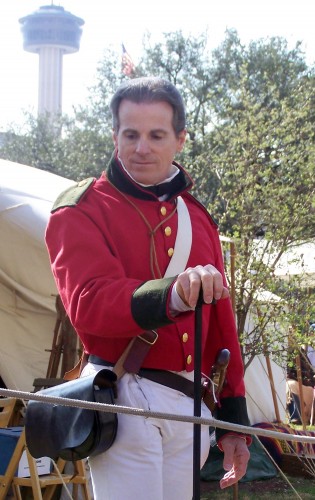

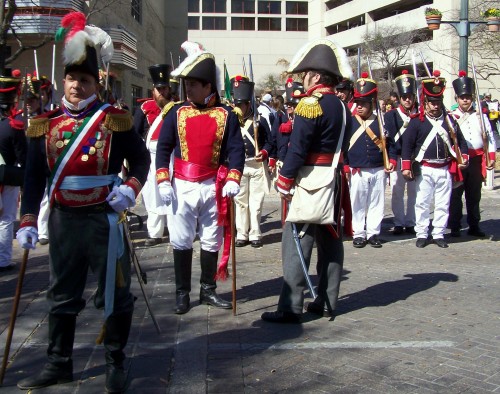
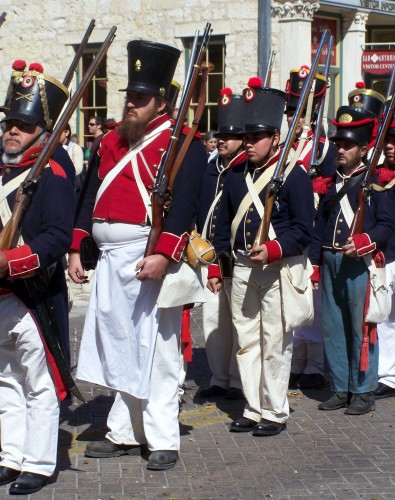
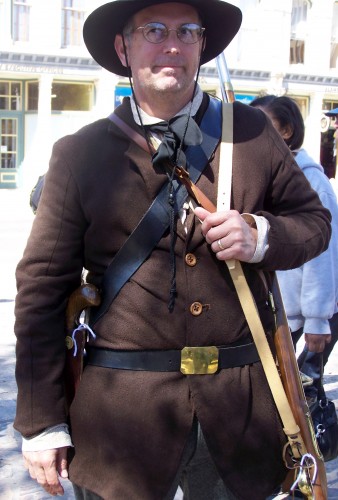
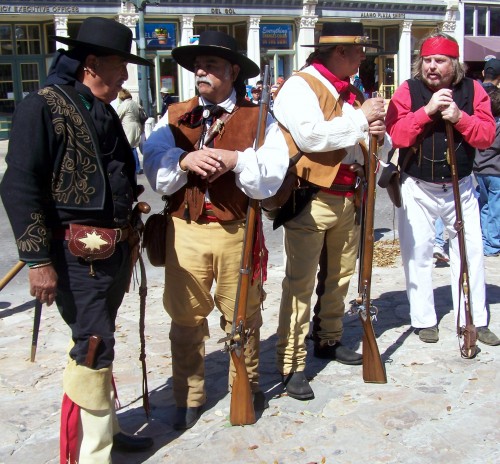
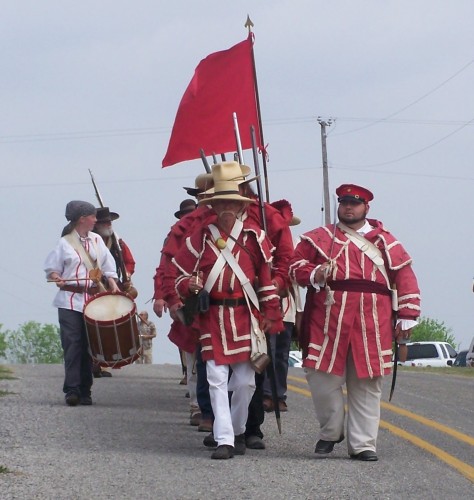
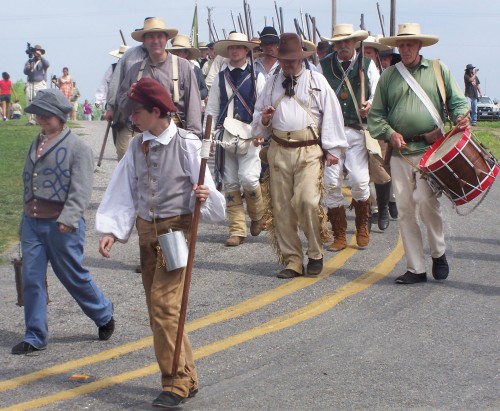
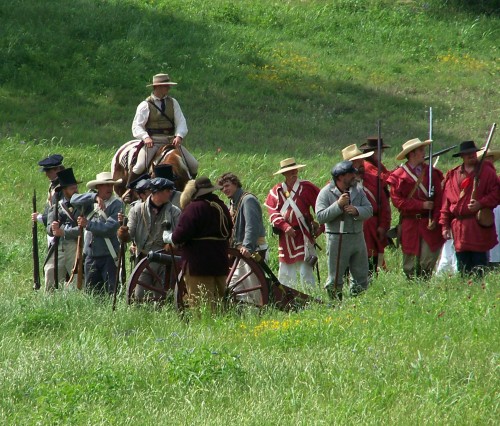
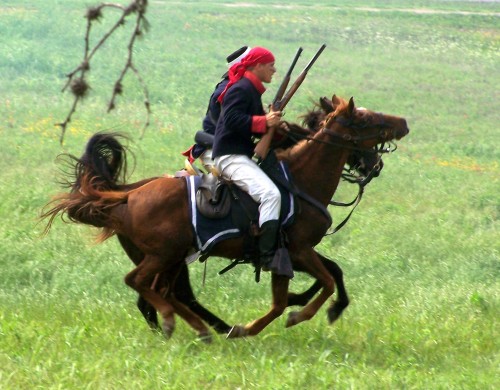
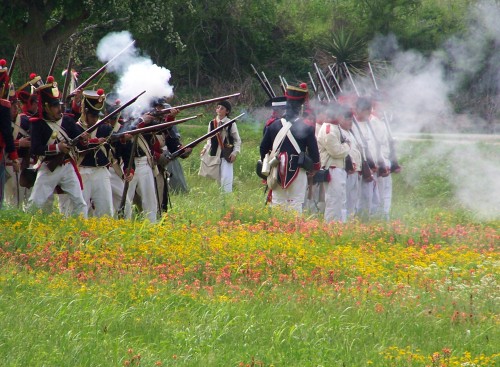
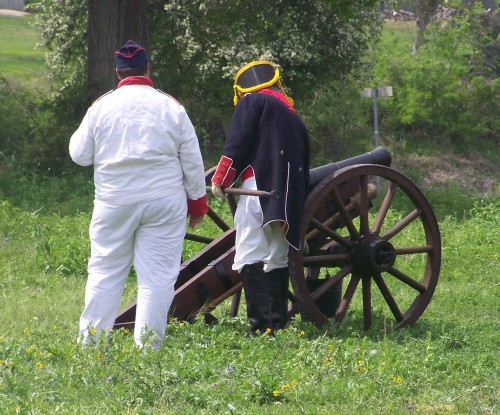
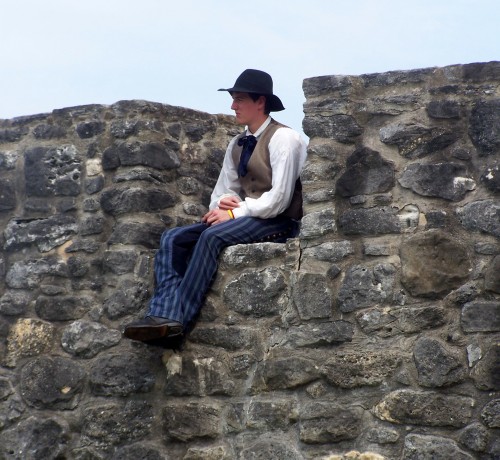
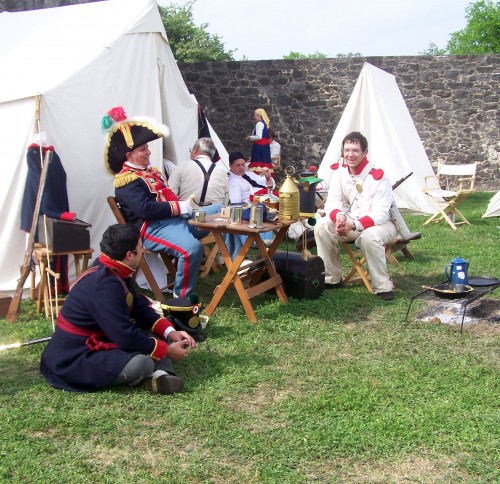
I had not heard of Goliad. It seems Santa Ana did a lot to rally Texans to rebel.
Lopez de Santa Anna had ‘form’ as they say in England – before launching his campaign in Texas, he had just put down a similiar rebellion in Zacatecas. He had come out as a Centralist,(after being considered as a Federalist; a liberal in favor of a loose confederation of states, like the US). He had rescinded the Constitution of 1824, made himself dictator … gosh, that does sound familiar, doesn’t it?
In a lot of ways, the Texas rebellion was just the last outburst of a long political dispute in Mexico.
Isn’t the Texian volunteer in brown (6th photo) Ben Linus from Lost? Is there a DHARMA hatch in San Jacinto I don’t know about?
Er … I don’t think so, since I wasn’t asking for names and ID … but it is a marked resemblance. And it would be a DHARMA hatch in San Antonio … maybe in the basement of the Alamo.
Contemporary histories of the Texas War of Indepedence tend to gloss over just what a treacherous and brutal rat bastard Santa Anna was. His arrogance, despotism and ruthlessness triggered opposition throughout Mexico. Most Hispanics in Texas rebelled along with the Anglos.
Texans rebelled not just because they refused to live under a dictatorship but because they knew full well just how dangerous Santa Anna was even to those who bent their necks to him.
Poetically, it was the very traits that made him so dangerous that led to his downfall.
Thanks for the pictures. My re-enactment unit [Co. “I”, First US Dragoons] covers the period when we had to deal with Santa Anna again [1846-48]. I do wish that you had been able to go to San Jacinto re-enactment and get pictures.
Before the new La Raza/Atzlan supporting head of the El Pueblo Museum barred us because of the “atrocities” she says the Gringos did to Mexicans by winning the war, we used to appear at the local annual Mercado [my unit was stationed therefor a while after the Mexican War] and there were frequently guest units of Mexican re-enactors. Aside from the fun of re-living history and teaching the tourists/students; much of the pleasure of re-enacting that makes up for the time effort and cost, is meeting other re-enactors, comparing notes and equipment, and socializing. I can imagine the fun that was being had by the people in the pictures. Mind you, it is not all fun. Those are wool uniforms in the summer.
Subotai Bahadur
You have a wonderful sense of history Sgt – and presented an angle I hadn’t considered.
You have to wonder – if Santa Anna had been thinking politically – and not just militarily – showing compassion to the surrendered men – how different our history – Texas’ – and Mexico’s might have been.
Your article reminded me on an interesting article in – I think it was American Heritage – on the fate of Davy Crockett at the Alamo.
Very interesting article on his background and why he came to Texas. Was trying to find it via Google but couldn’t after a short search.
Bottom line – there was compelling evidence that he “survived” the battle only to be murdered by one of Santa Anna’s men shortly after the battle.
And like Goliad at least a few Mexican soldiers were horrified at this action.
That angle has been kicked around by a few historians, Bill – that if Santa Anna had not been so bloody-minded, had accepted surrender under honorable terms as they were understood at the time, and paroled all the various volunteers (kicking them out of Texas) he would have looked magnanimous, statesmenlike. The rebellian might just have fizzled out right then and there, for the Texians weren’t really all that organized. The various volunteers would have looked like fools and tools, being dumped weaponless back on the docks of New Orleans. Instead – they became martyrs.
There had actually been a ‘Peace Party’ and a “War Party’ among the long-time American settlers in Texas … Stephen Austin was more or less the leader of the faction conciliatory towards Mexico; they were perfectly willing to live under Mexican law, such as it was, for they had a pretty sweet deal, and didn’t want to upset what they had by acting rashly. By the time that the Texian rebellian began, even Stephen Austin had been alienated and disillusioned. With the executions of the surrendered from the Alamo and the Goliad, that put the Texian’s backs against the wall; resist or die.
Subotai, bet the museum director glosses right over how Santa Anna’s government waged a cold and now and again hot war against the Republic of Texas, how Santa Anna reneged on his promises made after San Jacinto, how General Woll’s raid into Texas captured San Antonio in 1842 captured the District Court in session, and dragged off fifty citizens in chains to rot in Perote prison for two years. Memory is a wonderfully convenient thing, apparently.
…and contrast the actions of Santa Anna to that of Sam Houston – who, when he captured him, could have been just as bloody. But he was thinking politically. And amid all this I read that one of the reasons Texas was an independent country for 9 years was that Washington was afraid to offer them statehood and offending Mexico.
I did not know about the various factions before with Stephen Austin but it is perfectly logical.
My wife and I were strolling in London a few years ago and came across a plaque on a wall, explaining that we were looking at the building that had housed the Embassy of the Republic of Texas.
Sgt. Mom Says:
October 18th, 2011 at 8:47 am
Not only did she forget/ignore what you listed, she ignored something that happened closer to home. While our unit was stationed in Pueblo after the Mexican War, for some reason a couple of hundred Texans came up here for the express purpose of burning Pueblo to the ground. Co. “I”, then commanded by Phillip St. George Cook [a legend in US horse soldier history, who later wrote the manual used by both sides of the Civil War], intercepted them, disarmed them, and sent them back to Texas.
On the Left, support for the Narrative and for Race always outweighs historical reality, even for museum directors.
Subotai Bahadur